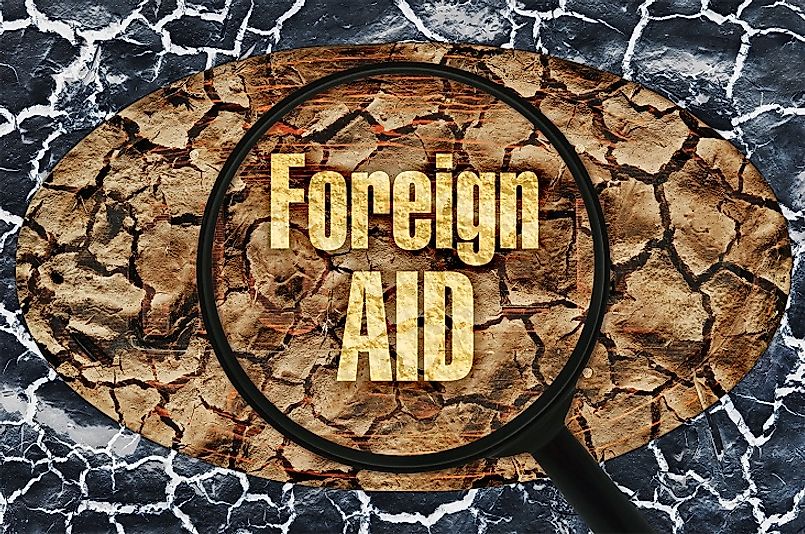Why Do Some Countries Receive So Little In Foreign Aid?

4. ODA
Official Development Assistance (ODA) aid is the money given by wealthier nations to directly helps poor countries develop. Unfortunately, the system is not perfect, with many recipients following corrupt or wasteful practices, and donors often reneging on their disbursement pledges. As previously discussed, countries such as Indonesia, Venezuela, Panama, Iran, and Chile receive negligible amounts of ODA relative to their respective Gross National Incomes.
3. FINANCIAL MISMANAGEMENT OF FOREIGN AID
Foreign aid is assistance purposed for the development of a country, usually sourced from other, wealthier countries and given to poorer countries. Foreign aid assistance’s intention is that the money will be used to improve the living conditions and economic well-being for the recipient country and its people. At times, however, this philanthropic system fails to work properly. What may have started out as a good humanitarian idea can at times turn out horribly wrong. In such cases, we often see a scenario wherein the countries that are supposed to donate the monies are actually creating loans, while the countries that receive the money end up inefficiently utilizing the money they receive or using it for corrupt purposes. Other times, however, the system works just as it is supposed to. We see this often when natural disasters occur or after a war, especially when other multinational non-governmental organizations (NGOs) and other agencies step up to get involved and help to oversee the allocation of the monies. In such cases, the aid given to the countries is supposed to go directly towards developing the country and its peoples’ welfare for things such as education, clean water, clean air, or land development to help the residents get out of poverty or otherwise undesired stations of living.
2. SHORTCOMINGS IN GIVING
Oftentimes, it is the wealthy nation that does not follow through on their agreed 0.7% of the Gross National Income (GNI) to the poor countries. The United States, for example, has at times failed to meet its obligation consistently, even though it stands as one of the largest donors globally. While global foreign aid disbursements have been increasing in 2014 and 2015 to reach an all-time high level, it is often not the right aid that the wealthy countries agreed to and that the recipients need.
This money, however, has actually decreased. According to the Organization for Economic Cooperation and Development (OECD), a growing trend has been seen among wealthy countries deciding that it would be more profitable to give loans to middle income countries, rather than helping to increase the living situations of poor countries through direct aid. Although the United States, the United Kingdom, Germany, France, and Japan could afford to give the promised .07% contributions of their respective Gross National Incomes to poorer countries, they have increasingly opted to allocate those monies in other ways. On the other hand, smaller developed countries, such as Denmark, Luxembourg, Norway, and Sweden, have conversely actually given more than they originally agreed to, which really says something wonderful about the philanthropy of those countries’ respective peoples and governments.
All of the countries involved in the donation process must answer to the United Nations at some level to be held accountable for their actions. Possibly, it is the accountability process itself that needs work, in order to impress the need for more aid to poor countries for development. A greater number of stronger countries will help the global economy become stronger and facilitate international parity, instead of keeping the poor countries poor and the wealthy countries wealthy.
1. MUTUAL BENEFITS FOR DONORS AND RECIPIENTS
If the current trends seen in foreign development assistance aid disbursements from Scandinavian nations spread to the rest of the developed, there may be an age approaching wherein the wealthiest countries follow through on the promises they made to the rest of the world, and they actually donate the monies they promised. As the largest wealthy countries start giving their promised 0.7% Gross National Income to the poor countries as money for development, it can only strengthen the wealth of the donor country. In reciprocal good will mutual betterment will occur, for as the poor country pays the loan back, the wealthy country will continue to develop itself.











